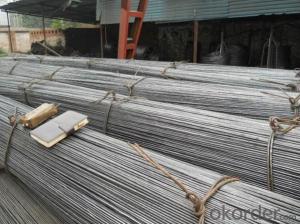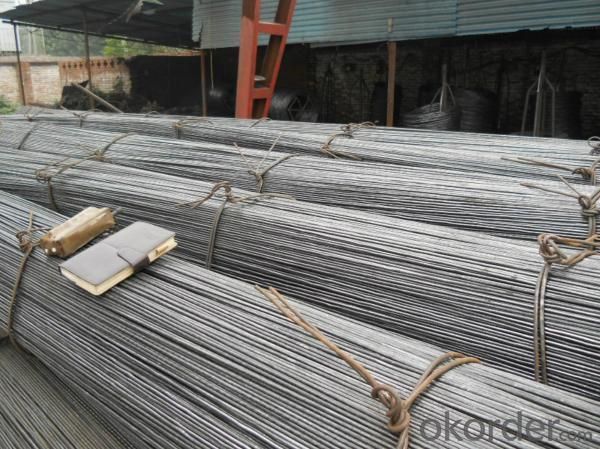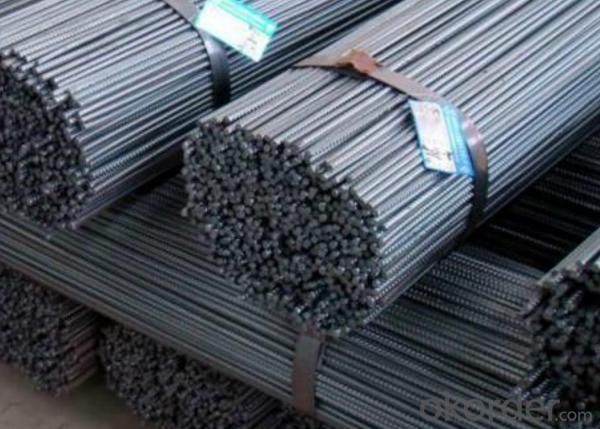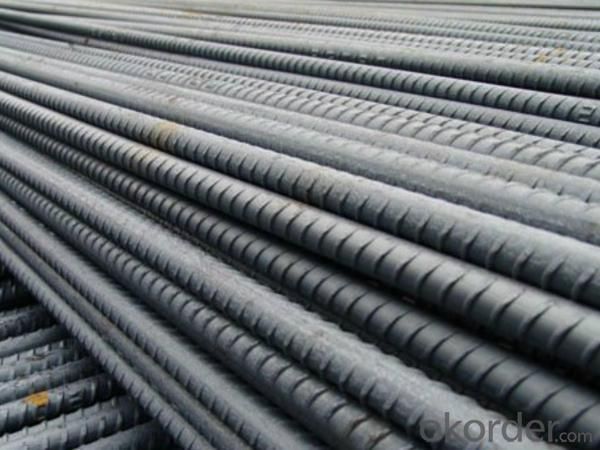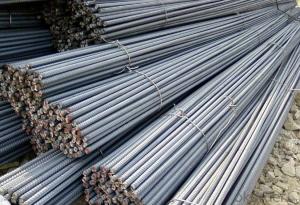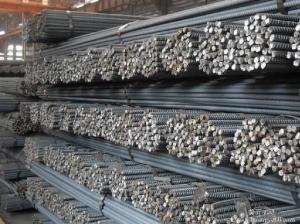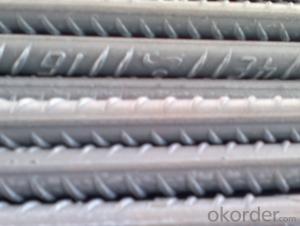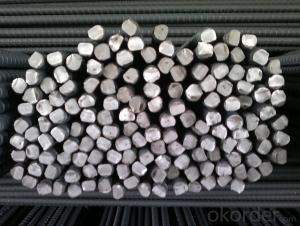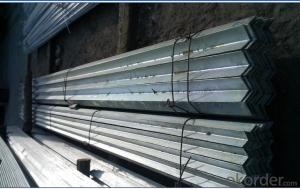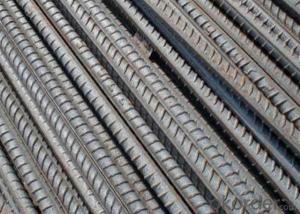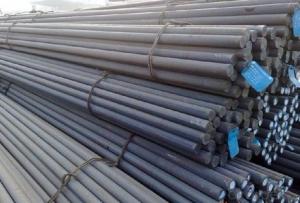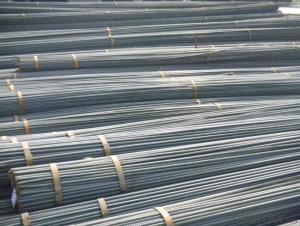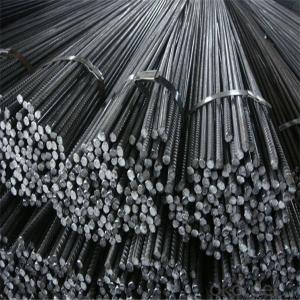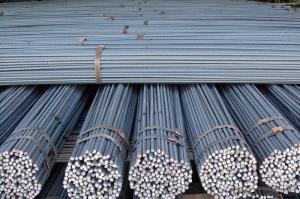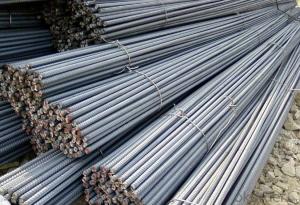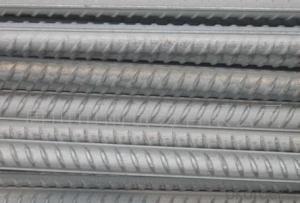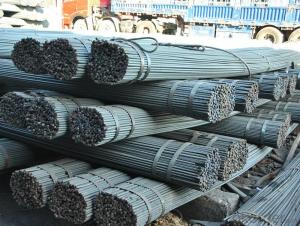Hot Rolled Steel HRB500 Deformed steel bar for Construction
- Loading Port:
- Tianjin
- Payment Terms:
- TT or LC
- Min Order Qty:
- 1000 m.t.
- Supply Capability:
- 10000 m.t./month
OKorder Service Pledge
OKorder Financial Service
You Might Also Like
Product Description:
OKorder is offering Hot Rolled Steel HRB500 Deformed steel bar for Construction at great prices with worldwide shipping. Our supplier is a world-class manufacturer of steel, with our products utilized the world over. OKorder annually supplies products to European, North American and Asian markets. We provide quotations within 24 hours of receiving an inquiry and guarantee competitive prices.
Product Applications:
Hot Rolled Steel HRB500 Deformed steel bar for Construction are ideal for structural applications and are widely used in the construction of buildings and bridges, and the manufacturing, petrochemical, and transportation industries.
Product Advantages:
OKorder's Hot Rolled Steel HRB500 Deformed steel bar for Construction are durable, strong, and resist corrosion.
Main Product Features:
· Premium quality
· Prompt delivery & seaworthy packing (30 days after receiving deposit)
· Corrosion resistance
· Can be recycled and reused
· Mill test certification
· Professional Service
· Competitive pricing
Product Specifications:
Standard | GB | HRB400 | |
Diameter | 6mm,8mm,10mm,12mm,14mm,16mm,18mm,20mm, 22mm,25mm,28mm,32mm,36mm,40mm,50mm | ||
Length | 6M, 9M,12M or as required | ||
Place of origin | Hebei, China mainland | ||
Advantages | exact size, regular package, chemical and mechanical properties are stable. | ||
Type | Hot rolled deformed steel bar | ||
Brand name | DRAGON | ||
Grade | Technical data of the original chemical composition (%) | ||||||
C | Mn | Si | S | P | V | ||
HRB400 | ≤0.25 | ≤1.60 | ≤0.80 | ≤0.045 | ≤0.045 | 0.04-0.12 | |
Physical capability | |||||||
Yield Strength (N/cm²) | Tensile Strength (N/cm²) | Elongation (%) | |||||
≥400 | ≥570 | ≥14 | |||||
Packaging & Delivery of Hot Rolled d-bar Steel
1. Packing: it is nude packed in bundles by steel wire rod
2. Bundle weight: not more than 3.5MT for bulk vessel; less than 3 MT for container load
3. Marks:
Color marking: There will be color marking on both end of the bundle for the cargo delivered by bulk vessel. That makes it easily to distinguish at the destination port.
Tag mark: there will be tag mark tied up on the bundles. The information usually including supplier logo and name, product name, made in China, shipping marks and other information request by the customer.
If loading by container the marking is not needed, but we will prepare it as customer request.
4. Transportation: the goods are delivered by truck from mill to loading port, the maximum quantity can be loaded is around 40MTs by each truck. If the order quantity cannot reach the full truck loaded, the transportation cost per ton will be little higher than full load.
5. Delivered by container or bulk vessel
FAQ:
Q1: Why buy Materials & Equipment from OKorder.com?
A1: All products offered byOKorder.com are carefully selected from China's most reliable manufacturing enterprises. Through its ISO certifications, OKorder.com adheres to the highest standards and a commitment to supply chain safety and customer satisfaction.
Q2: How do we guarantee the quality of our products?
A2: We have established an advanced quality management system which conducts strict quality tests at every step, from raw materials to the final product. At the same time, we provide extensive follow-up service assurances as required.
Q3: How soon can we receive the product after purchase?
A3: Within three days of placing an order, we will begin production. The specific shipping date is dependent upon international and government factors, but is typically 7 to 10 workdays.
Q4: What makes stainless steel stainless?
A4: Stainless steel must contain at least 10.5 % chromium. It is this element that reacts with the oxygen in the air to form a complex chrome-oxide surface layer that is invisible but strong enough to prevent further oxygen from "staining" (rusting) the surface. Higher levels of chromium and the addition of other alloying elements such as nickel and molybdenum enhance this surface layer and improve the corrosion resistance of the stainless material.
Q5: Can stainless steel rust?
A5: Stainless does not "rust" as you think of regular steel rusting with a red oxide on the surface that flakes off. If you see red rust it is probably due to some iron particles that have contaminated the surface of the stainless steel and it is these iron particles that are rusting. Look at the source of the rusting and see if you can remove it from the surface.
Images:
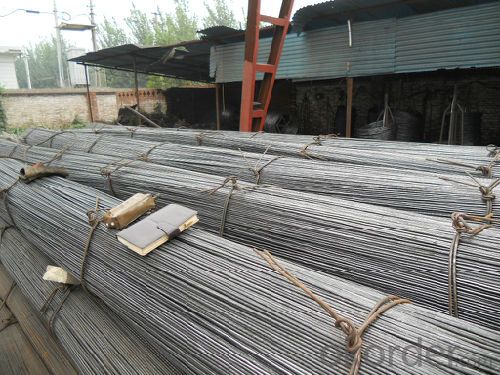
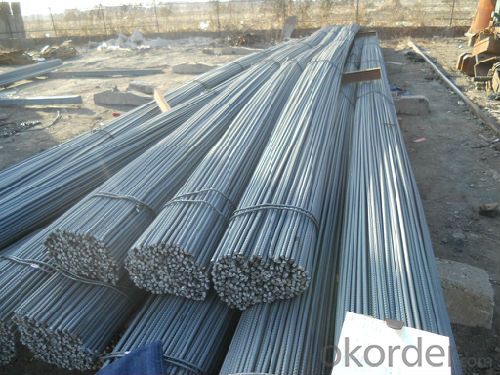
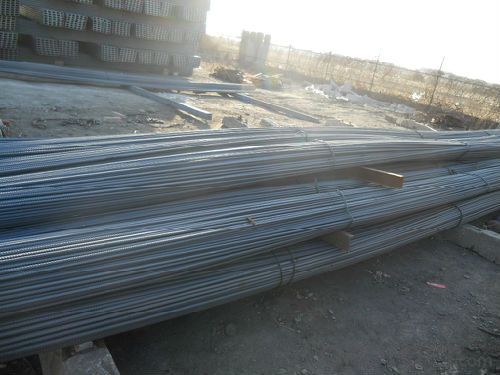
- Q: What is the tensile strength of a steel rebar?
- The tensile strength of a steel rebar typically ranges from 60,000 to 100,000 pounds per square inch (psi).
- Q: What are the guidelines for the proper anchoring of steel rebars in columns?
- The guidelines for the proper anchoring of steel rebars in columns typically include ensuring that the rebars are adequately spaced, have sufficient embedment length, and are securely tied or welded to the column reinforcement. Additionally, the rebars should be properly aligned and centered within the column, and any required cover or protective measures should be implemented to prevent corrosion or damage. It is crucial to follow the specific design and code requirements for the project to ensure the structural integrity and safety of the reinforced concrete column.
- Q: Are steel rebars suitable for use in extreme temperatures?
- Yes, steel rebars are suitable for use in extreme temperatures. Steel has excellent thermal conductivity and can withstand both high and low temperatures without significant structural damage, making it a reliable choice for construction in extreme temperature environments.
- Q: What are the environmental benefits of using steel rebars?
- Using steel rebars in construction projects has several environmental benefits. Firstly, steel rebars are highly durable and long-lasting, which means they have a significantly longer lifespan compared to other materials. This reduces the need for frequent replacements and minimizes the amount of waste generated. Additionally, steel rebars are 100% recyclable, allowing them to be repurposed in new construction projects, reducing the demand for new materials and conserving natural resources. Furthermore, steel production emits fewer greenhouse gases compared to other materials like concrete, contributing to reduced carbon emissions and mitigating climate change. Overall, the use of steel rebars supports a more sustainable and eco-friendly approach to construction.
- Q: What is the effect of steel rebars on the thermal conductivity of concrete?
- The presence of steel rebars in concrete has a significant effect on its thermal conductivity. Steel is a good conductor of heat, meaning it can easily transfer thermal energy through its structure. When steel rebars are embedded within concrete, they create a pathway for heat to flow through the material. This thermal conductivity of steel rebars can have both positive and negative implications on the overall thermal performance of concrete structures. On one hand, it can enhance the overall heat transfer within the structure, allowing for more efficient heating or cooling. This can be advantageous in applications where thermal conductivity is desired, such as in building designs that require active temperature control. However, the presence of steel rebars can also lead to increased heat loss or gain depending on the environmental conditions. In situations where there is a temperature difference between the inside and outside of the structure, the steel rebars can act as thermal bridges, allowing heat to escape or enter the building more easily. This can result in higher energy consumption for heating or cooling purposes. To mitigate these potential issues, additional insulation measures can be implemented to reduce the thermal bridging effect caused by steel rebars. This could include using thermal break materials or coatings, or adopting insulation techniques such as adding foam or other insulating materials around the rebars. In summary, steel rebars in concrete have a significant impact on its thermal conductivity. While they can enhance heat transfer within the structure, they can also lead to increased heat loss or gain. Proper insulation measures should be considered to minimize the negative effects of thermal bridging caused by steel rebars.
- Q: What is the recommended diameter of steel rebars for foundation reinforcement?
- The recommended diameter of steel rebars for foundation reinforcement typically ranges from 12mm to 32mm, depending on the specific requirements and load-bearing capacity of the foundation.
- Q: Can steel rebars be used in both residential and commercial construction?
- Indeed, steel rebars find extensive utility in both residential and commercial construction endeavors. These rebars frequently serve as reinforcement within concrete structures, endowing them with heightened fortitude and longevity. They prove apt for an array of applications, encompassing foundations, walls, columns, beams, and slabs - all of which are integral components within both residential and commercial construction projects. By employing steel rebars, one guarantees that the concrete structures can withstand the burdens and pressures they encounter, rendering them suitable for diverse construction ventures, regardless of their magnitude or objective.
- Q: How are steel rebars spliced or connected in construction joints?
- Steel rebars are typically spliced or connected in construction joints using several methods, including lap splicing, mechanical splicing, and welded splicing. Lap splicing involves overlapping the rebars and tying them together with wire or steel bars, ensuring proper alignment and contact between the rebars. Mechanical splicing utilizes couplers or threaded sleeves to connect the rebars, providing a stronger and more efficient joint. Welded splicing involves welding the rebars together, ensuring a secure and durable connection. The choice of splicing method depends on factors such as the project requirements, structural design, and construction site conditions.
- Q: Can steel rebars be used in tunnels or underground transportation systems?
- Tunnels or underground transportation systems can indeed utilize steel rebars. These rebars are frequently employed in construction projects, including tunnels and underground transportation systems, owing to their durability and high tensile strength. By providing reinforcement to concrete structures, they enhance their structural integrity and prevent cracking or collapsing. In underground environments where moisture and other corrosive elements may exist, the resistance to corrosion exhibited by steel rebars is particularly crucial. Moreover, steel rebars can be easily fabricated and installed, making them a practical option for construction projects with tight schedules. All in all, steel rebars constitute a dependable and widely utilized material in tunnels and underground transportation systems, ensuring the safety and durability of the structures.
- Q: What is the typical lifespan of steel rebars in different climates?
- The typical lifespan of steel rebars can vary depending on the climate conditions. In general, rebars can last for several decades in moderate climates with low humidity and minimal exposure to corrosive elements. However, in more extreme climates with high humidity, saltwater exposure, or severe temperature fluctuations, rebars may experience accelerated corrosion and have a shorter lifespan. Regular maintenance and proper corrosion protection measures can help extend the lifespan of rebars in different climates.
Send your message to us
Hot Rolled Steel HRB500 Deformed steel bar for Construction
- Loading Port:
- Tianjin
- Payment Terms:
- TT or LC
- Min Order Qty:
- 1000 m.t.
- Supply Capability:
- 10000 m.t./month
OKorder Service Pledge
OKorder Financial Service
Similar products
Hot products
Hot Searches
Related keywords
